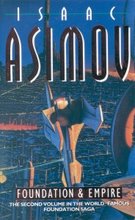
Ripping yarn from Science Daily
As regular readers will have noticed I do have an interest in matters scientific. I wouldn’t say that I’m an expert in any of the fields but I suspect like most I have an interest in the universe around them.
I also enjoy reading about all the different research projects that are being undertaken. Anything that advances the breadth and depth of human knowledge has to be a good thing.
But just occasionally you do have to wonder about the worth of some of the studies being undertaken. Not that research should never be done for its own sake but there are the odd occasions where you can’t really get past the ‘Why?’
For example a recent study has been undertaken led by a team at the Centre National de la Recherche Scientifique in
Pedro Reis, one of the authors of the paper and an applied mathematics instructor at MIT explained. "You want to redecorate your bedroom, so you yank down the wallpaper. You wish that the flap would tear all the way down to the floor, but it comes together in a triangle and you have to start all over again,"
This pattern, where two cracks propagate toward each other and meet at a point, is extremely robust. It applies not only to wallpaper but other adhesives such as tape, as well as non-adhesive plastic sheets such as the shrink-wrap that envelops compact discs. It even extends to fruit: The skin on a tomato or a grape typically forms a triangle when peeled off.
The team found that those ubiquitous triangular tears arise from interactions between three inherent properties of adhesive materials: elasticity (stiffness), adhesive energy (how strongly the adhesive sticks to a surface) and fracture energy (how tough it is to rip).
The researchers developed a formulation that predicts the angle of the triangle formed, based on those three properties.
They also figured out just how those triangular tears arise. As the strip is pulled, energy builds up in the fold that forms where the tape is peeling from the surface. The tape can release that energy in two ways: by unpeeling from its surface and by becoming narrower.
I’m not immediately sure what practical benefits will ensue from the research. If you have any suggestions please do let me know. However as the CNRS is the largest Governmental Research body in France and thanks to the unique way that European Research is funded I’m sure that we happy citizens should soon be sharing the benefits.
And is this worthwhile? I’m torn.














7 comments:
Makes you wonder what they were thinking of when they decided to do the study!
One's tax dollars at work. Still one never knows. I think it sounds rather boring myself but they probably had a ball doing it.
Did you post this early for 1st april?
I suppose the point is it's off the wall... :-)
Well at least they had a ripping time ;-)
As Oscar Wilde may or may not have said on his death bed: "Either that wallpaper goes, or I do..."
It would be worthwhile if they could figure out how to make wallpaper which tears off in one strip - well, possibly - what's wrong with a little frustration and effort? It makes the end result more satisfying. No, it doesn't - but it might.
Surely the benefits of this research is obvious?? Through this we can understand how the universe works (ie forces) better and it has a number of immediately implementable practical uses. Wallpaper which comes off more easily to name the immediately apparent one!
Post a Comment